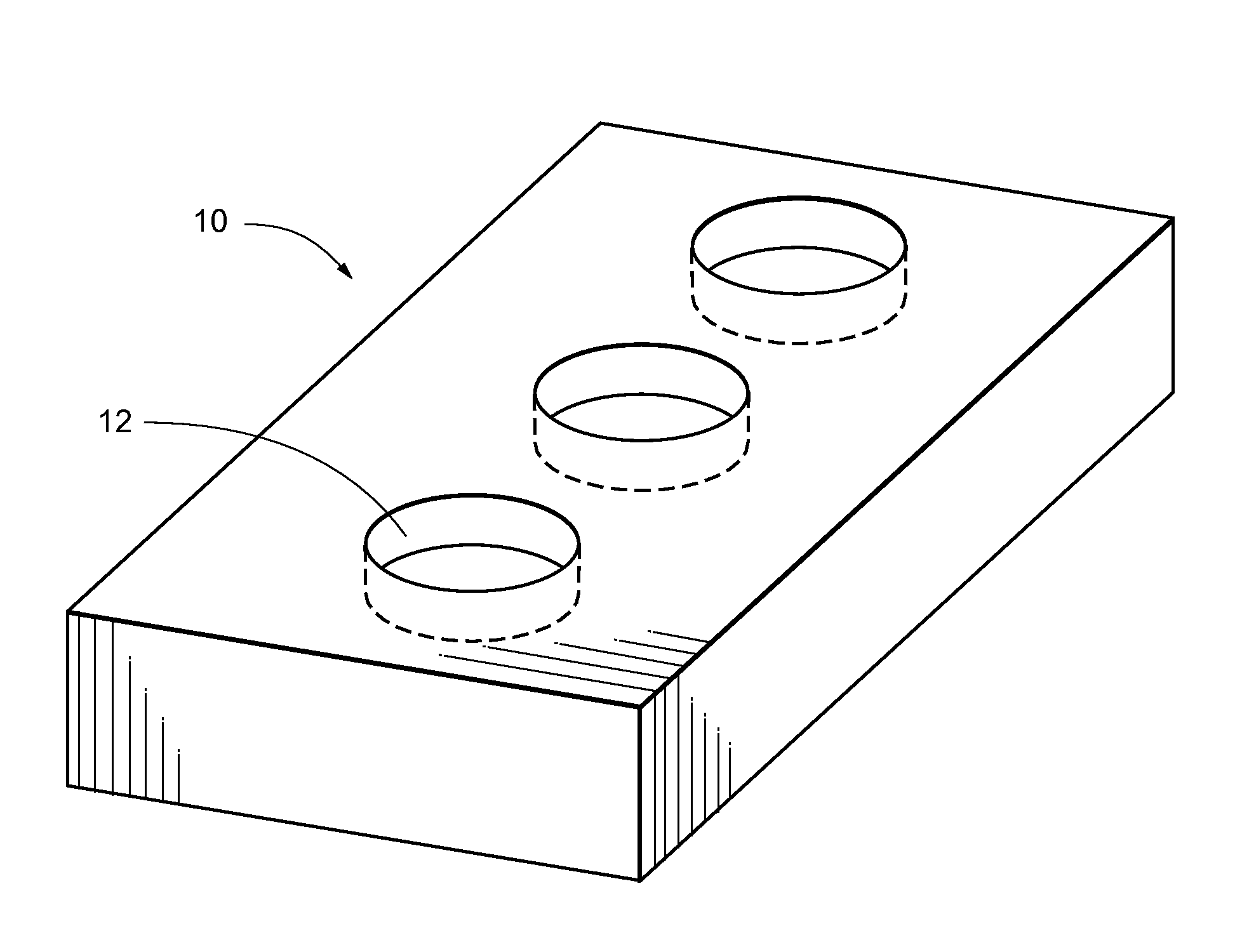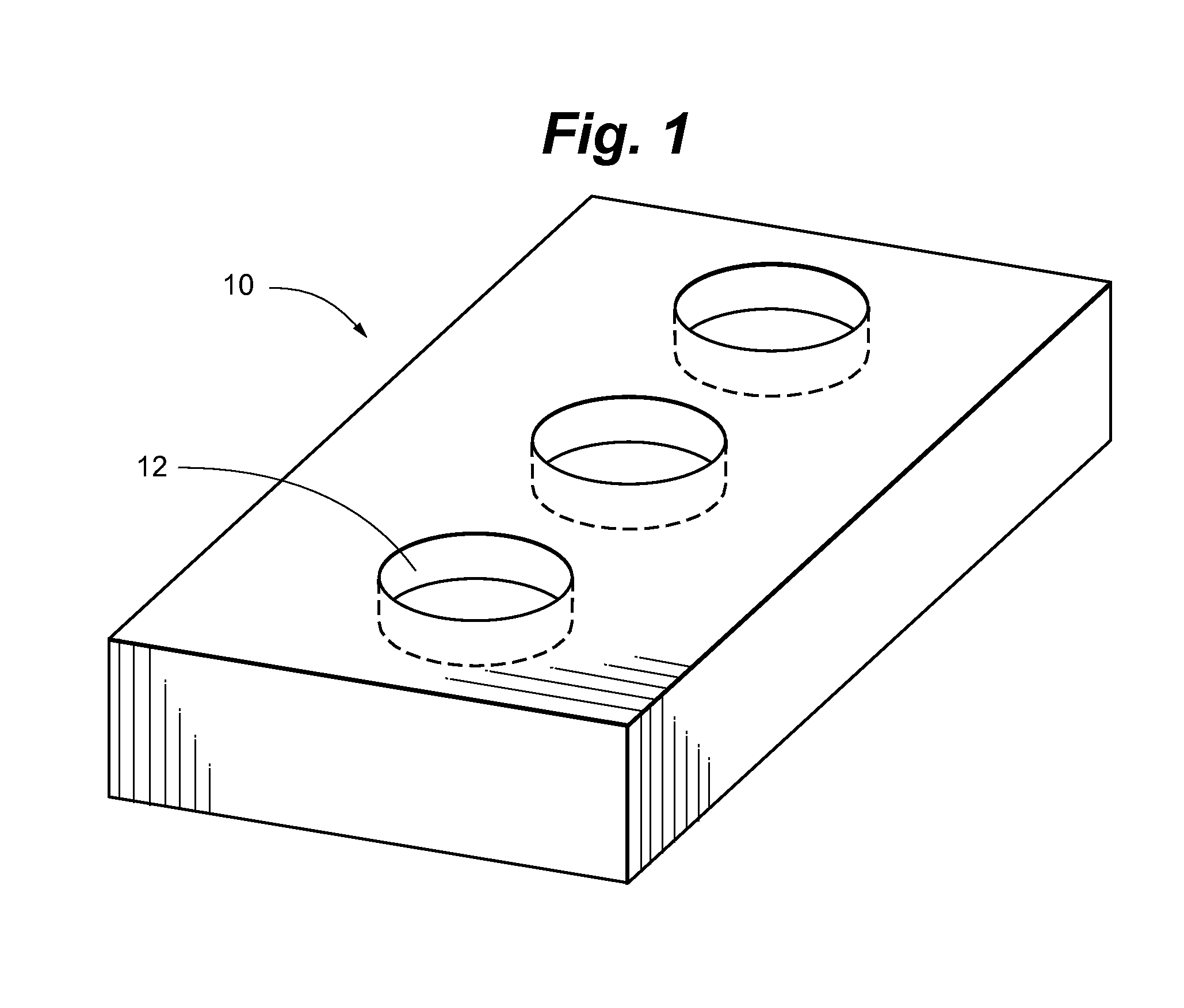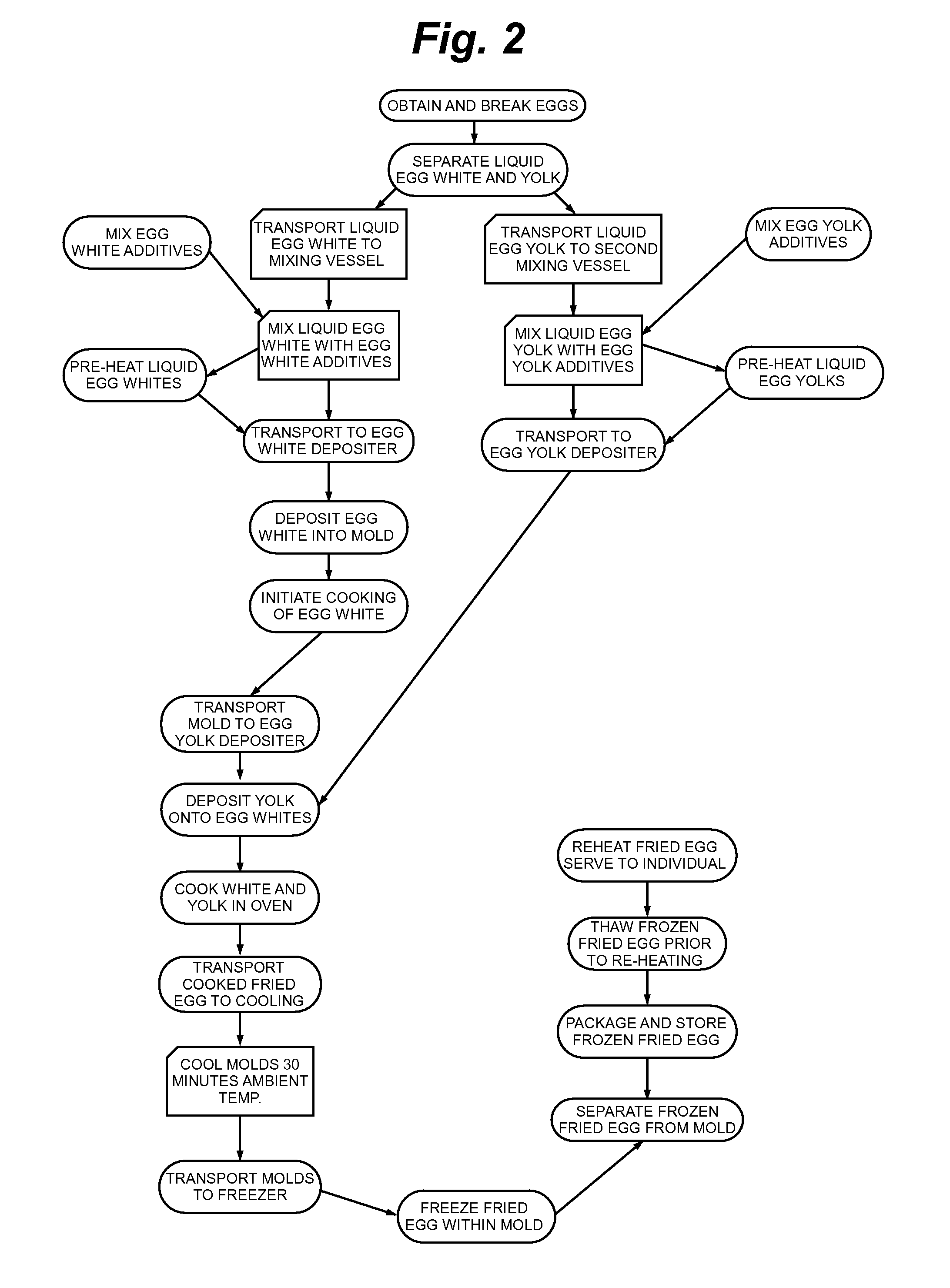Process to prepare a premium formulated fried egg
a technology processing methods, which is applied in the field of formulation of formulated fried egg products, can solve the problems of poor viscosity of food articles after cooking, poor taste of formulated fried eggs, and many problems, so as to enhance the appeal and appearance of a formulated fried egg product, improve texture, and improve the appearance
- Summary
- Abstract
- Description
- Claims
- Application Information
AI Technical Summary
Benefits of technology
Problems solved by technology
Method used
Image
Examples
example i
[0127]Initially, shell eggs were broken and separated into liquid egg yolk portions and liquid egg white portions by commercial egg shelling and separation techniques. 600.6 grams of liquid egg yolk were placed into a mixing vessel. Next, 120 ml. of cold water was combined with 477.96 grams of hard cooked egg yolk in a mixer whereupon mixing occurred. Next, 0.6 grams of propylene glycol were combined to 0.6 grams of xanthan gum in a bucket where mixing occurred through use of a whisk. Next, 0.24 grams of citric acid were added to the glycol / gum mixture whereupon mixing occurred. The mixed glycol / gum / citric acid mixture and water / hard cooked egg yolk mixture were added to the liquid egg yolk where agitation occurred. The mixed yolk portion was then transferred to a heat exchanger for preheating to a temperature just below the yolk coagulation point. The preheated liquid egg yolk portion was then pumped to a yolk depositor.
[0128]3,753.6 grams of egg whites were added to a mixing vesse...
example ii
[0130]Initially, shell eggs were broken and separated into liquid egg yolk portions and liquid egg white portions by commercial egg shelling and separation techniques. 958.8 grams of liquid egg yolk were added to a mixing vessel. Next, 234 grams of egg whites were combined with 2.99 grams of xanthan gum and 2.99 grams of carrageenen whereupon mixing occurred. Next, 1.20 grams of citric acid were added to the egg white / gum / carrageenen mixture whereupon mixing occurred. The resulting mixture was then added to the liquid egg yolk where agitation occurred. The mixed yolk portion was then transferred to a heat exchanger for preheating to a temperature just below the yolk coagulation point. The preheated liquid egg yolk portion was then pumped to a yolk depositor.
[0131]2,430 grams of liquid egg whites were added to a mixing vessel. Next, 62.5 grams of polar gel were combined with 5 grams of xanthan gum and 2.5 grams of citric acid whereupon mixing occurred. The mixed polar gel / gum / citric ...
example iii
[0132]Initially, shell eggs were broken and separated into liquid egg yolk portions and liquid egg white portions by commercial egg shelling and separation techniques. 500 grams of liquid egg yolk were added to a mixing vessel. Next, 495.5 grams of whole egg and 4.5 grams of xanthan gum were placed in a mixing vessel and mixed. The mixed whole egg and gum were then added to the liquid egg yolk whereupon mixing occurred. The mixed yolk portion was then transferred to a heat exchanger for preheating to a temperature just below the yolk coagulation point. The preheated liquid egg yolk portion was then pumped to a yolk depositor.
[0133]890.5 grams of liquid egg whites were added to a mixing vessel. Next, 80 grams of soy bean oil, 25 grams of polar gel, 5 grams of salt, and 0.5 grams of xanthan were added to a mixing vessel and mixed. The mixed oil / gel / salt / gum was then added to the liquid egg whites where mixing occurred. The liquid egg white portion was then transferred to a heat exchan...
PUM
 Login to View More
Login to View More Abstract
Description
Claims
Application Information
 Login to View More
Login to View More - R&D
- Intellectual Property
- Life Sciences
- Materials
- Tech Scout
- Unparalleled Data Quality
- Higher Quality Content
- 60% Fewer Hallucinations
Browse by: Latest US Patents, China's latest patents, Technical Efficacy Thesaurus, Application Domain, Technology Topic, Popular Technical Reports.
© 2025 PatSnap. All rights reserved.Legal|Privacy policy|Modern Slavery Act Transparency Statement|Sitemap|About US| Contact US: help@patsnap.com



